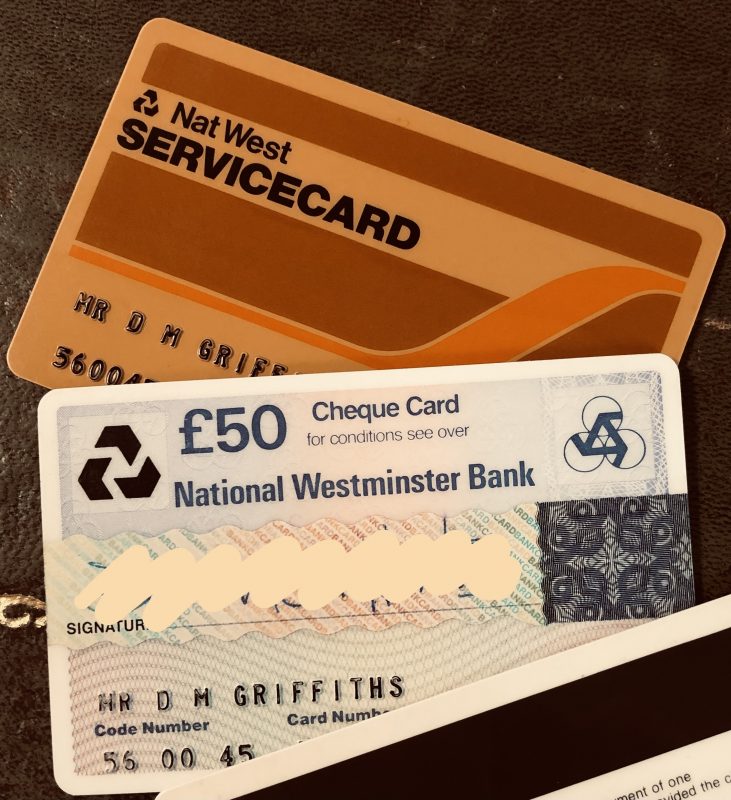Back in the late 1970s, customer-facing banking technology was just getting started. I was studying at the University of Warwick, and the university was serviced by the four main banks: Midland, NatWest, Barclays and Lloyds. At the time, three out of the four banks provided ATM facilities; the exception was Barclays. This was around the time Barclays was suffering from a certain amount of protestation due to their operations in South Africa, and so the Barclays Branch was protected by shutters during non-opening hours.
The technology provided by the banks was still in its relative infancy, but it had come a long way since Barclays unveiled the world’s first ATM in Enfield in 1967. Back in the day, in order to provide the cash in hand services that we now can’t live without (maybe?), the banks would issue qualifying customers with a pack of vouchers. I remember seeing some in my dad’s wallet when I was very young, and I seem to remember they had punched holes in them. I was fascinated at the time although I do know that he never used them. He would go to the bank on a Friday and draw cash using his cheque book, I know this because sometimes I went with him.
The first ATM cards were non-returnable: the customer inserted them into the ATM, the ATM requested a six-digit PIN and then dispensed a tenner. The transaction was then processed as a cheque against the customer’s current account.
These ATMs were mainly mechanical, with the electronics being dedicated to authenticating the PIN. Not surprisingly, there was no notion of online authorisation – that was to come later.
By 1979, the punched, one-time ATM card had been replaced with magstripe technology and I remember opening my first proper bank account and receiving a NatWest Servicecard and a Cheque Guarantee card, along with my first cheque book.

The NatWest ATM outside the Student Union was a clunky old thing, although it was modern at the time: it didn’t have a CRT but instead used a roll of black rubber messages like the destination sign on a bus. Inserting a Servicecard fired up the machine and the display whirred into action, spinning the instructions rapidly before my eyes before coming to an abrupt stop to ask me for the amount of cash that I wanted to withdraw before reversing the whirring to ask me for my PIN.
The PIN requirement at the ATM had been reduced to four digits … and I still use that same four-digit PIN now.
I don’t know if it was because the ATM was located at the University, but in 1979, I do remember it dispensing one-pound notes! It also dispensed fivers, but back then a fiver was a lot of money. A pound note would be enough for two pints, a burger and a go on the pinball!
I never had a Lloyds account but even so, the Lloyds ATM always struck me as a bit quaint. There was no CRT display, and there was also no whirring rubber band; the Lloyds ATM instructions were provided by a green one-line dot matrix display that had to be viewed through an adjustable letterbox. This was an IBM cash dispenser and I later saw the same UI technology being used by the branch staff at the cash desks in the Halifax Building Society.
Whilst I was there, the Midland Bank installed a new ATM with a CRT, NatWest and Lloyds followed suit. NatWest stopped dispensing one-pound notes, favouring fivers and tenners, and the South Africa connection to Barclays was forgotten, allowing for the removal of the security shutters and the installation of the fourth campus ATM.
Who would have thought that since that time I would have worked my way through front-line banking and ATM support and on to the interesting stuff? Since then, I have been lucky enough to have been involved in most of the significant UK payment and ATM initiatives, and also many of the payment initiatives more generally.
My first real role was helping new ATM service providers (banks and building societies) connect their ATMs to the LINK network. I then moved on to helping connect the LINK network to the other UK ATM networks, providing customers with universal access to ATM withdrawals. Later, I was involved in the first international ATM cash withdrawal facility that didn’t use the card scheme networks: we connected the LINK network to SIBS in Portugal and 4B in Spain and the first transaction was performed by the Spanish CEO in Trafalgar Square. I was also involved in developing all the systems – from scratch – that would support an early “ATMs as a Service” proposition, which was successful and paved the way for the UK Convenience ATM market.
Little did I know at the time that my fascination with the campus ATMs would stay with me through my working life. Whilst we all take them for granted, I wonder what Reg Varney would be thinking today?


